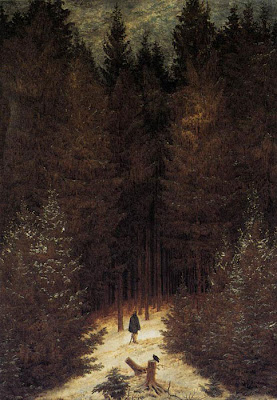 Moonrise Over the Sea 1822
Moonrise Over the Sea 1822"One of the great themes of of nineteenth-century Romantic painting was the interplay between the world and the spirit: the search for images of those states of mind, embodied in nature, that exist beyond or below our conscious control" (Hughes, R 1980 p.269).
 Seashore by Moonlight, 1835–36
Seashore by Moonlight, 1835–36Friedrich would influence a diverse range of artists from the New England luminists to the Symbolists and Munch to Expressionism and Surrealism; notably the work of Max Ernst. Surrealist would view Friedrich as a precursor to their movement.
In his 1961 article "The Abstract Sublime" Robert Rosenbloom would draw comparisons between the work of the abstract expressionists and the artists Turner and Friedrich.








No comments:
Post a Comment